Mini-heterochromatin domains constrain the cis-regulatory impact of SVA transposons in human brain development and disease
- PMID: 38834915
- PMCID: PMC11479940
- DOI: 10.1038/s41594-024-01320-8
Mini-heterochromatin domains constrain the cis-regulatory impact of SVA transposons in human brain development and disease
Abstract
SVA (SINE (short interspersed nuclear element)-VNTR (variable number of tandem repeats)-Alu) retrotransposons remain active in humans and contribute to individual genetic variation. Polymorphic SVA alleles harbor gene regulatory potential and can cause genetic disease. However, how SVA insertions are controlled and functionally impact human disease is unknown. Here we dissect the epigenetic regulation and influence of SVAs in cellular models of X-linked dystonia parkinsonism (XDP), a neurodegenerative disorder caused by an SVA insertion at the TAF1 locus. We demonstrate that the KRAB zinc finger protein ZNF91 establishes H3K9me3 and DNA methylation over SVAs, including polymorphic alleles, in human neural progenitor cells. The resulting mini-heterochromatin domains attenuate the cis-regulatory impact of SVAs. This is critical for XDP pathology; removal of local heterochromatin severely aggravates the XDP molecular phenotype, resulting in increased TAF1 intron retention and reduced expression. Our results provide unique mechanistic insights into how human polymorphic transposon insertions are recognized and how their regulatory impact is constrained by an innate epigenetic defense system.
© 2024. The Author(s).
Conflict of interest statement
The authors declare no competing interests.
Figures
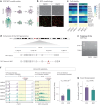
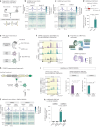



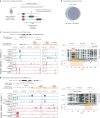
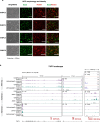
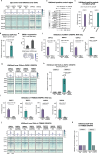

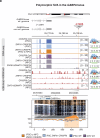
Similar articles
-
ZNF91 is an endogenous repressor of the molecular phenotype associated with X-linked dystonia-parkinsonism (XDP).Proc Natl Acad Sci U S A. 2024 Aug 13;121(33):e2401217121. doi: 10.1073/pnas.2401217121. Epub 2024 Aug 5. Proc Natl Acad Sci U S A. 2024. PMID: 39102544 Free PMC article.
-
G-quadruplexes in an SVA retrotransposon cause aberrant TAF1 gene expression in X-linked dystonia parkinsonism.Nucleic Acids Res. 2024 Oct 28;52(19):11571-11586. doi: 10.1093/nar/gkae797. Nucleic Acids Res. 2024. PMID: 39287133 Free PMC article.
-
Dissecting the Causal Mechanism of X-Linked Dystonia-Parkinsonism by Integrating Genome and Transcriptome Assembly.Cell. 2018 Feb 22;172(5):897-909.e21. doi: 10.1016/j.cell.2018.02.011. Cell. 2018. PMID: 29474918 Free PMC article.
-
SVA retrotransposons: Evolution and genetic instability.Semin Cancer Biol. 2010 Aug;20(4):234-45. doi: 10.1016/j.semcancer.2010.04.001. Epub 2010 Apr 21. Semin Cancer Biol. 2010. PMID: 20416380 Free PMC article. Review.
-
SVA retrotransposons as potential modulators of neuropeptide gene expression.Neuropeptides. 2017 Aug;64:3-7. doi: 10.1016/j.npep.2016.09.006. Epub 2016 Oct 11. Neuropeptides. 2017. PMID: 27743609 Free PMC article. Review.
Cited by
-
ZNF91 is an endogenous repressor of the molecular phenotype associated with X-linked dystonia-parkinsonism (XDP).Proc Natl Acad Sci U S A. 2024 Aug 13;121(33):e2401217121. doi: 10.1073/pnas.2401217121. Epub 2024 Aug 5. Proc Natl Acad Sci U S A. 2024. PMID: 39102544 Free PMC article.
-
G-quadruplexes in an SVA retrotransposon cause aberrant TAF1 gene expression in X-linked dystonia parkinsonism.Nucleic Acids Res. 2024 Oct 28;52(19):11571-11586. doi: 10.1093/nar/gkae797. Nucleic Acids Res. 2024. PMID: 39287133 Free PMC article.
References
MeSH terms
Substances
LinkOut - more resources
Full Text Sources
Research Materials

